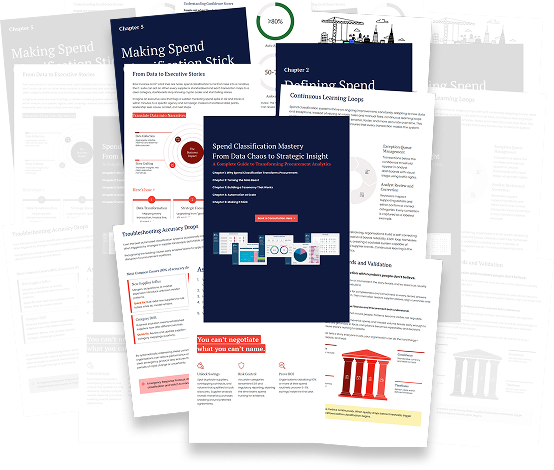Reimagining how quick service restaurants (QSRs) approach the specification, sourcing, and management of COGS can yield substantial benefits, including cost reduction, alignment with evolving consumer preferences, as well as effective risk management.
Over the last ten years, the quick service restaurant sector has grappled with considerable profitability challenges. Intensified competition, particularly from newcomers and discount-focused establishments, along with price-sensitive consumer behaviour, have driven prices downwards.
Moreover, the race to stay in tune with emerging trends and constantly shifting dietary choices has led to heightened demand unpredictability, increased product portfolio complexity, and escalated development outlays. The volatility of raw material prices, which make up a significant chunk of both direct material costs (55 to 82 percent) and total costs (28 to 42 percent), has surged by 30 to 50 percent over the past decade. Concurrently, fluctuations in currency exchange rates have compounded uncertainties, impacting the operations of QSR chains on a local and global basis.
Within this challenging landscape, QSR players must rethink their strategies for ingredient selection, specification, sourcing, and management. The most successful players embrace a comprehensive approach that uncovers novel pathways to reduce overall costs and unlock concealed value within the raw material supply chain. This strategy has enabled QSRs to realize savings of 2 to 6 percent on direct material costs. This positions it as a remarkably effective tool in the QSR arsenal: for every 1 percent enhancement in direct material costs, QSRs can elevate their net margin by 2-3 percent.
Examination of the Supply Base
In recent years, fluctuations in commodity prices have been notable. To swiftly capitalize on these cost changes, QSRs need mechanisms to identify and evaluate potential savings opportunities. This demands a flexible procurement process to promptly seize these prospects.
A growing number of QSR players are adopting should-cost modelling techniques. This approach empowers buyers to comprehensively understand the cost drivers of both current and potential suppliers. These insights aid in constructing efficient requests for quotation (RFQs) and determining optimal negotiation and market-entry strategies. These strategies encompass elements such as award duration and the extent to which prices are linked to underlying commodity costs. Additionally, this method uncovers potential for unbundling specific components from a supplier’s offering if more efficient delivery can be achieved elsewhere.
QSR companies must also gain a deep understanding of fundamental commodity cost structures, including recipe formulation, OEM production costs, and logistical expenses. Analytical tools facilitate the assessment of multiple sourcing scenarios, even down to individual suppliers, enabling large scale optimization to drive informed decision-making.
Prominent multinational QSR chains that have partnered with Comprara have implemented inflation and commodity tracking mechanisms across their major expenditure categories. These tools provide near real-time feedback on sourcing performance relative to market movements, enhancing agility in response to underlying price trends.
Ensuring Future Supply Sustainability
QSR leaders are actively safeguarding the long-term sustainability of their ingredient supply base. For example, a Comprara QSR client, partnered with poultry producers two seasons ahead of procurement to secure a stable supply of protein, mitigating potential supply disruptions driven by market fluctuations.
Successfully navigating these value sources necessitates QSRs to evolve their procurement practices, often requiring the acquisition of new skills, tools, and processes. Best in class companies are adopting a systematic approach to develop these capabilities, drawing from industries that have pioneered advanced sourcing techniques and cultivating in-house expertise. QSR, at the median level, has not kept pace with these organisations and industries in driving true value. Starting with advanced sourcing efforts in high-spending categories, QSR leaders can achieved rapid savings while refining processes and skills that can be applied across their product offerings. Historical data, based on Comprara consultancy engagements, suggests that these techniques yield average cost savings of 6 to 12 percent and enhance availability and customer value perception, yielding a 5 to 12 percent sales impact across various product categories.
Mitigating Risk
At the core of effective materials supply management in the QSR industry is a sophisticated approach to risk management. Price volatility in key food commodities has been prominent in recent years. For example, volatility in protein and dairy prices surged in certain sub categories by 25 to 40 percent from 2019 to 2022. Leading QSRs shield themselves from the impact of these fluctuations by enhancing forecasting capabilities, running supplier partnership programs, utilizing financial instruments for price hedging, and implementing changes to products and supply chains to minimize the effects of volatility.
Optimizing Specifications
Leveraging recipe management techniques empowers QSRs to discern the most crucial product features for consumers. Thoughtful evaluations of consumer preferences enable significant savings through adjustments to specifications or the incorporation of cost-effective ingredients. Additionally, QSRs can enhance product value and drive sales growth through value-added processes and ingredients. For instance, one major QSR chain replaced eggs with a blend of vegetarian ingredients that preserved taste and flavour, reducing costs while maintaining product quality.
Flexibility as a Shield
A flexible approach can assist QSRs in mitigating exposure to commodity price volatility. By adopting flexible formulation strategies, QSRs can create alternative recipes for each product, allowing for adjustments based on ingredient costs and availability.
Understanding the Value Chain Rather than simply accepting ingredient costs, leading QSRs invest time and effort to determine what these costs should be. This involves a comprehensive assessment of various players across the value chain, determining their roles, the costs of services provided, and available options.
Secrets to Successful Implementation
By scrutinizing the value chain for a processed-egg product, one QSR chain identified intermediaries with a disproportionate impact on price and availability. This led to separate negotiations with these intermediaries to achieve improved prices and supply security.
Understanding underlying supplier costs enables QSRs not only to negotiate better prices but also to explore collaborative methods to deliver value. As QSRs shape their strategies and chart their course, they should consider fundamental questions.









